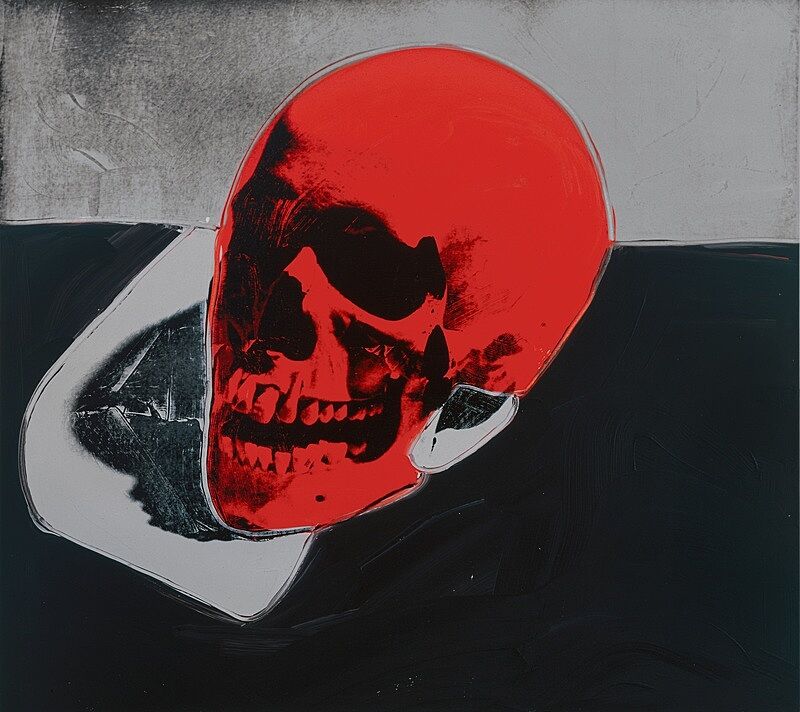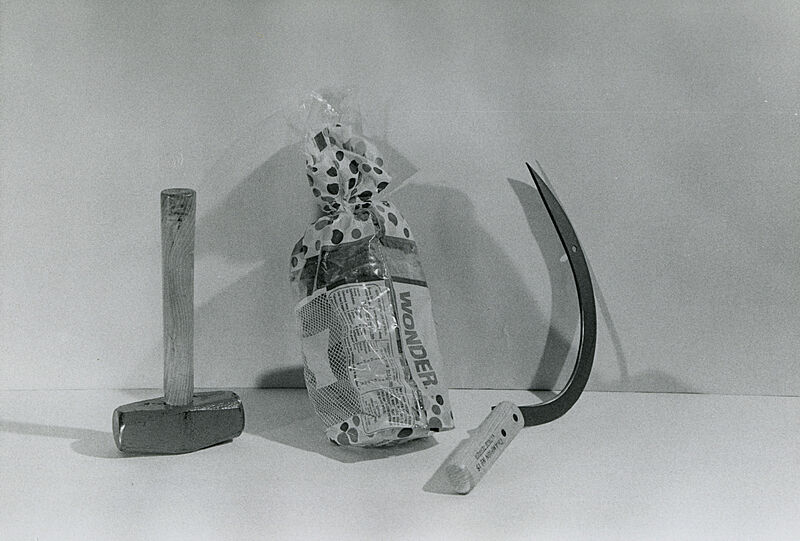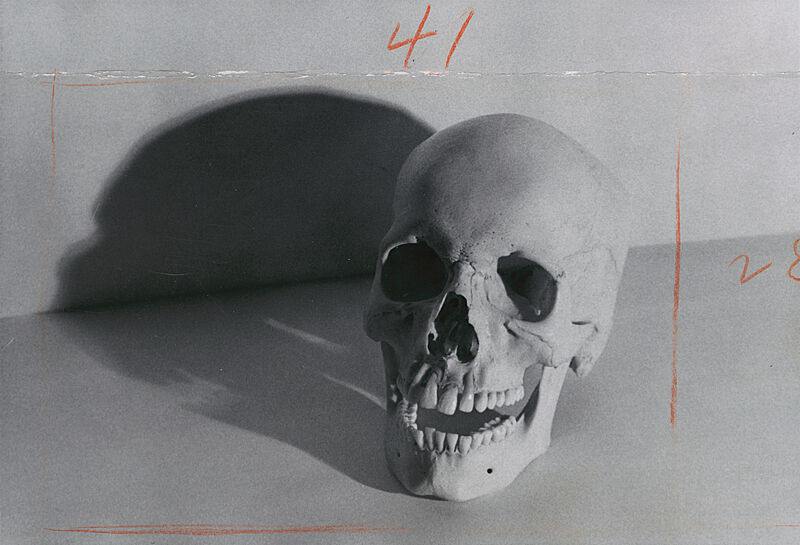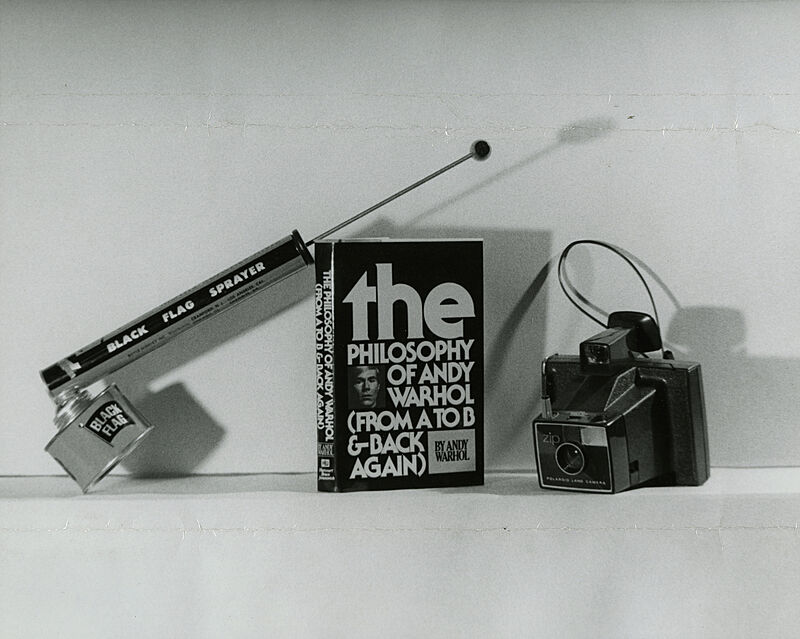Andy Warhol— From A to B and Back Again | Art & Artists
Nov 12, 2018–Mar 31, 2019
Andy Warhol— From A to B and Back Again | Art & Artists
Still Lifes and Shadows
14
Many of Warhol’s major series of the 1970s and 1980s fall into traditional genres—portraits, still lifes, nudes, and landscapes—which, while seemingly straightforward, allowed for a vast range of formal and technical experimentation.
Skull, 1976
For a series of still lifes begun in 1975, Warhol worked with assistants to make theatrically lit studio photographs of a variety of objects, such as a skull or a hammer and sickle, positioning them to cast shadows so dramatic that they took on identities of their own.
In the years that followed, he created a number of paintings based on these photographs. It was through these investigations into photography—a medium most commonly associated with accurate representation—that Warhol was able to make works that read more overtly as abstraction. Beginning in 1978, he made a radical shift and did away with the objects entirely, producing an expansive series of more than one hundred paintings focused only on shadows, which he titled just that: Shadows. In these works Warhol freed himself from his Pop subjects by experimenting with something close to pure abstraction. Yet he never completely divorced himself from his sources, maintaining his connection to the everyday world while still playing with the problem of how images generate meaning.




